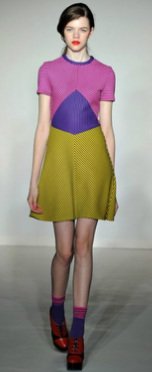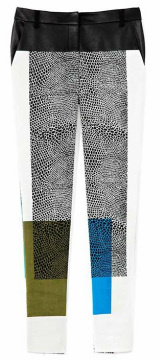The runways for Spring and Summer 2013 were littered with the trend of color blocking. For Fall 2013, I predict that color blocking will still be going strong, with more cold weather tones than bright, summery tones. For mass consumers, color blocking will be demonstrated through colors sewn together in single garments, rather than pairing separate colors together to create a color blocked outfit. It is harder to look successfully color blocked when pairing separate colors.
Color blocking is definitely still in the mass acceptance stage of the fashion cycle where I believe it will remain for as long as it wants!
Color Blocking With A Single Garment-
Color Blocking with Separates-
Color Blocking is when a single article or outfit is composed of finite blocks of color. Some color blocking is layering colors rather than building blocks of color. There are several types of color blocking. Theres is monochromatic color blocking, color wheel color blocking, and black and white color blocking.
Hue: a color or shade

Primary Colors: 3 colors that can't be formed by any other combination of colors
(Red, Yellow, and Blue)
Secondary Colors: Colors formed by mixing primary colors
(Green, Orange, and Purple)
Tertiary Colors: Colors formed by mixing a primary and secondary color together
| Complementary Colors:
Colors directly across from each other on the color wheel
Analogous Colors:
Any three colors directly next to each other on the color wheel
| |

Monochromatic Colors: All the colors (tints, tones, and shades) of a single hue
The Rule of Two-Thirds:
“The most popular theory for combining colors is called the rule of two-thirds. How you achieve the rule of two-thirds starts by making an equilateral triangle (a triangle with 3 equal sides) on the color wheel… From there, you pick two of the three colors that the triangle touches. These colors will almost always harmonize together beautifully.”
-Style Prompt









